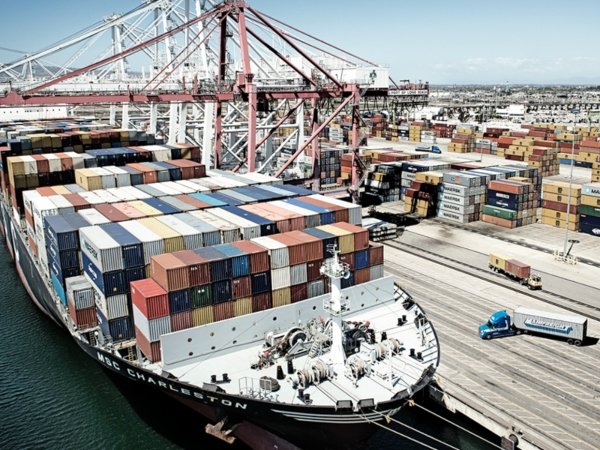Key takeaways
When it comes to negotiating freight rates for LCL shipments, there are several key takeaways to keep in mind. Understanding market trends is crucial for making informed decisions during negotiations and securing competitive rates. Analyzing your shipment volume and frequency can help you leverage this information to negotiate lower rates and secure more favorable terms with carriers. Building strong relationships with carriers not only leads to better rates but also ensures smooth logistics operations. Optimizing packaging and cargo consolidation can lead to cost savings and increased efficiency in the shipping process. Lastly, leveraging technology for efficient communication is essential in today’s digital landscape for successful negotiations. By incorporating these key takeaways into your strategy, you can navigate the complexities of the freight industry and secure the best possible rates for your LCL shipments.
In today’s fast-paced digital landscape, leveraging technology for efficient communication is not just advantageous but essential when negotiating freight rates for LCL shipments.


Introduction
As an expert in the freight industry, it is crucial to stay ahead of market trends when negotiating freight rates for LCL shipments. By analyzing market fluctuations and understanding the factors that influence rates, you can strategically navigate negotiations to secure the most competitive prices for your shipments. Additionally, optimizing packaging and cargo consolidation plays a significant role in reducing costs and increasing efficiency in the shipping process. By leveraging technology for efficient communication with carriers, you can streamline operations and ensure smooth logistics for your business. Building strong relationships with carriers is also key to negotiating better rates and fostering long-term partnerships that benefit both parties. Overall, a comprehensive approach that combines market knowledge, efficient packaging, technology, and relationship-building is essential for successful negotiations and cost-effective LCL shipments in today’s competitive landscape.
Understanding the Market Trends
Having a clear understanding of market trends is essential when negotiating freight rates for LCL shipments. It requires staying informed about the latest rates and fluctuations within the industry. By closely analyzing market trends, you can pinpoint the key factors that influence freight rates, allowing you to make well-informed decisions during negotiations. This knowledge not only empowers you to navigate the complexities of the market but also positions you to secure the most competitive rates for your LCL shipments.
By comparing the rates with the market average, you can gauge whether the proposed rates are fair and reasonable. This knowledge allows you to negotiate effectively and secure favorable rates for your LCL shipments. Understanding market trends not only gives you insight into the competitiveness of the rates but also helps you anticipate potential changes in pricing. By staying ahead of market fluctuations, you can adapt your negotiation strategies accordingly, ensuring that you always secure the most advantageous rates for your LCL shipments. This proactive approach not only saves you money but also positions you as a savvy negotiator in the ever-evolving freight industry.
Analyzing Freight Volume and Frequency
Understanding the volume and frequency of your shipments is crucial when negotiating freight rates for LCL shipments. Carriers are more willing to offer competitive rates to customers who have a steady flow of shipments. By analyzing your shipment volume and frequency, you can not only leverage this information to negotiate for lower rates but also to secure more favorable terms with carriers.
Having a clear understanding of your shipping patterns allows you to present a strong case to carriers, demonstrating your commitment and reliability as a customer. This data can be used as a bargaining tool during negotiations, potentially leading to discounted rates or additional perks. By strategically analyzing your shipment volume and frequency, you can optimize your negotiation strategy and ensure that you are getting the best possible rates for your LCL shipments.
Furthermore, having a clear understanding of your freight volume and frequency not only allows you to leverage your shipping volume as a bargaining tool but also opens up opportunities for strategic partnerships with carriers. If you consistently have a high volume of LCL shipments, carriers may be more inclined to offer you discounted rates, priority scheduling, or even exclusive deals. By showcasing your shipping patterns and commitment to regular business, you can position yourself as a valuable customer worth investing in for carriers. This level of analysis and negotiation tactics not only maximizes cost savings but also streamlines your shipping operations for optimal efficiency and success in the competitive freight industry.
Building Strong Relationships with Carriers
Building strong relationships with carriers is not only crucial for negotiating better freight rates for LCL shipments but also for ensuring smooth and reliable logistics operations. By cultivating a positive rapport with carriers, you not only establish trust and mutual understanding but also pave the way for long-term partnerships that benefit both parties.
Effective communication is at the core of building strong relationships with carriers. By maintaining open lines of communication, you can convey your shipping needs, provide feedback on services, and address any concerns promptly. This proactive approach not only demonstrates your commitment and reliability as a customer but also shows carriers that you value their services and are willing to work collaboratively towards mutual success.
In addition to communication, building strong relationships with carriers involves showing appreciation for their services and efforts. Recognizing and acknowledging the hard work and dedication of carriers can go a long way in fostering goodwill and building lasting partnerships. Whether it’s a simple thank you note or a token of appreciation, small gestures can make a big impact in strengthening relationships with carriers.
Furthermore, building strong relationships with carriers extends beyond just the negotiation table. By engaging in regular discussions, seeking feedback, and actively participating in carrier programs or initiatives, you can demonstrate your commitment to the partnership. This level of engagement not only helps in securing better rates and terms but also positions you as a valuable and reliable customer that carriers are eager to work with.
Overall, building strong relationships with carriers is a multifaceted approach that requires effective communication, appreciation for their services, and active engagement in the partnership. By investing time and effort in cultivating these relationships, you can not only negotiate better freight rates for LCL shipments but also ensure a seamless and efficient logistics process for your business.
To build strong relationships with carriers, it is important to communicate effectively and maintain open lines of communication. Regularly engage with carriers to discuss your shipping needs, provide feedback, and address any concerns. By demonstrating commitment and reliability, you can strengthen your position during negotiations and secure competitive rates for your LCL shipments.
Optimizing Packaging and Cargo Consolidation
Optimizing packaging and cargo consolidation is a critical aspect to keep in mind when negotiating freight rates for LCL shipments. Efficient packaging not only helps to reduce costs but also plays a significant role in increasing overall efficiency in the shipping process. By carefully considering the packaging of your cargo, you can maximize space utilization within containers, minimizing wasted space and ultimately allowing you to transport more goods in each shipment. This optimization not only leads to potential cost savings but also contributes to a more environmentally friendly and sustainable approach to shipping.
Cargo consolidation is another key factor in negotiating favorable rates for LCL shipments. By consolidating multiple shipments into a single container, you can take advantage of economies of scale, leading to reduced overall freight costs. This strategy not only benefits you financially but also benefits carriers by streamlining their operations and increasing the efficiency of transportation.
Incorporating efficient packaging and cargo consolidation practices into your negotiation strategy demonstrates to carriers that you are committed to maximizing efficiency and cost-effectiveness in your shipping operations. By presenting well-packaged and consolidated cargo, you not only improve the chances of securing better rates but also contribute to a smoother and more streamlined logistics process for all parties involved. Ultimately, optimizing packaging and cargo consolidation is key to achieving cost savings, increasing efficiency, and fostering successful negotiations for LCL shipments.
By optimizing packaging, you can maximize space utilization and minimize wasted space in containers. This allows you to ship more cargo in each shipment, potentially reducing the overall freight rate. Additionally, consolidating multiple shipments into a single container can lead to cost savings through economies of scale. By presenting carriers with well-packaged and consolidated cargo, you can negotiate for better rates and improve the efficiency of your LCL shipments.
Leveraging Technology for Efficient Communication
In today’s fast-paced digital landscape, leveraging technology for efficient communication is not just advantageous but essential when negotiating freight rates for LCL shipments. With the plethora of communication tools and platforms available, you have the opportunity to streamline the negotiation process, enhance collaboration with carriers, and ensure clear and timely communication every step of the way.
By harnessing the power of technology, you can easily share detailed shipment information, engage in real-time rate negotiations, and track the progress of your LCL shipments with precision. Whether it’s utilizing email, instant messaging, video conferencing, or specialized logistics software, incorporating these digital communication tools into your negotiation strategy can significantly improve efficiency and effectiveness.
Furthermore, technology enables you to maintain a centralized hub for all communication related to your shipments, ensuring that important details are not lost or overlooked. This organized approach not only facilitates smoother negotiations but also fosters transparency and accountability between you and the carriers you work with.
In a digital world where speed and accuracy are paramount, leveraging technology for efficient communication is a strategic advantage that can elevate your negotiation tactics and ultimately lead to more successful outcomes for your LCL shipments.
By utilizing technology, you can easily share shipment details, negotiate rates, and track the progress of your LCL shipments. This improves efficiency, reduces errors, and enhances transparency during negotiations. Additionally, technology can provide you with real-time market information, allowing you to make informed decisions and negotiate from a position of knowledge.
Overall, leveraging technology for efficient communication enhances the negotiation process and enables you to secure competitive freight rates for your LCL shipments.
Conclusion
In conclusion, having a clear understanding of your shipping patterns, building strong relationships with carriers, optimizing packaging and cargo consolidation, and leveraging technology for efficient communication are all essential components in negotiating competitive freight rates for LCL shipments. By strategically analyzing your shipment volume, cultivating positive relationships with carriers, optimizing packaging practices, and utilizing technology for streamlined communication, you can position yourself as a valuable customer worth investing in. These tactics not only lead to cost savings and operational efficiency but also pave the way for successful negotiations and long-term partnerships in the competitive freight industry. Embracing these strategies will ultimately lead to a smoother and more profitable shipping process for your business.


FAQ
What factors determine shipping freight rates?
Factors that determine shipping freight rates can vary depending on various aspects of the shipping process. Some common factors include the distance of the shipment, the weight and dimensions of the cargo, the mode of transportation (e.g. air, sea, or land), fuel costs, market demand, and any additional services required (such as special handling or expedited shipping). Carriers may also take into account the frequency of shipments, the seasonality of the shipping industry, the complexity of the logistics involved, and any potential risks or challenges associated with the route. By understanding these factors and how they impact freight rates, you can better navigate the negotiation process and secure competitive rates for your LCL shipments.
How to negotiate freight rates?
When it comes to negotiating freight rates, there are several key strategies that can help you secure competitive pricing for your LCL shipments. One important aspect is to have a clear understanding of the factors that determine shipping freight rates, such as distance, weight, mode of transportation, fuel costs, market demand, and additional services. By analyzing these factors and how they impact pricing, you can better position yourself during negotiations and make informed decisions.
Another crucial strategy is to leverage your relationships with carriers. Building strong relationships through effective communication, appreciation for their services, and active engagement in the partnership can help you establish a foundation of trust and collaboration. By showing carriers that you value their services and are committed to working together towards mutual success, you can create a positive negotiating environment that benefits both parties.
Additionally, optimizing packaging and cargo consolidation practices can play a significant role in negotiating favorable rates. By maximizing space utilization within containers and consolidating multiple shipments into a single container, you can reduce costs and increase efficiency in the shipping process. Presenting carriers with well-packaged and consolidated cargo demonstrates your commitment to efficiency and cost-effectiveness, which can lead to better negotiation outcomes.
Lastly, leveraging technology for efficient communication is essential in today’s digital landscape. By utilizing communication tools and platforms to share detailed shipment information, engage in real-time rate negotiations, and track the progress of your shipments, you can streamline the negotiation process and enhance collaboration with carriers. This organized and transparent approach can help you negotiate from a position of knowledge and secure competitive freight rates for your LCL shipments.
Incorporating these strategies into your negotiation tactics can lead to successful outcomes and long-term partnerships in the competitive freight industry. By understanding the factors that determine freight rates, building strong relationships with carriers, optimizing packaging and cargo consolidation, and leveraging technology for efficient communication, you can position yourself as a valuable customer worth investing in and achieve cost savings and operational efficiency in your shipping process.
How are freight rates determined?
Freight rates are determined by a combination of factors that reflect the complexities of the shipping industry. Distance, weight, and dimensions of the cargo play a significant role in calculating rates, as longer distances and heavier shipments typically incur higher costs. The mode of transportation, whether it be air, sea, or land, also impacts pricing due to varying operational expenses and infrastructure requirements.
Fuel costs are another crucial factor influencing freight rates, as fluctuations in oil prices directly affect the overall cost of transportation. Market demand and supply chain dynamics can also influence rates, with peak seasons and high demand routes often leading to increased pricing. Additionally, any special services required, such as expedited shipping or special handling, can result in additional charges.
Carriers take into account the frequency of shipments, seasonality in the shipping industry, and the complexity of logistics involved when determining rates. Understanding these factors and how they interplay is essential in navigating the negotiation process and securing competitive rates for LCL shipments. By analyzing these elements and their impact on pricing, businesses can make informed decisions and optimize their shipping strategies for cost-effectiveness and efficiency.
Can you negotiate shipping rates?
Negotiating shipping rates is not only possible but essential in the competitive freight industry. By understanding the various factors that determine freight rates and implementing strategic negotiation tactics, businesses can secure competitive pricing for their LCL shipments. Building strong relationships with carriers, optimizing packaging and cargo consolidation, and leveraging technology for efficient communication are all key strategies that can help in negotiating favorable rates. With a clear understanding of the shipping process and a proactive approach to negotiations, businesses can position themselves as valuable customers worth investing in, ultimately leading to cost savings and operational efficiency in their shipping processes. So yes, you can definitely negotiate shipping rates and achieve successful outcomes with the right tactics in place.
Hope this article was helpful for more checkout our previous blog post by clicking here.


